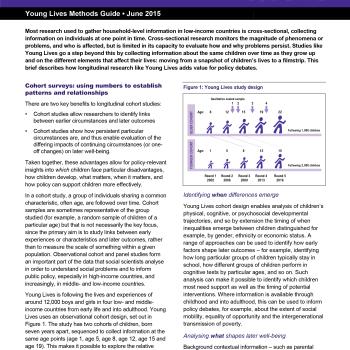
Most research used to gather household-level information in low-income countries is cross-sectional, collecting information on individuals at one point in time. Cross-sectional research monitors the magnitude of phenomena or problems, and who is affected, but is limited in its capacity to evaluate how and why problems persist. Studies like Young Lives go a step beyond this by collecting information about the same children over time as they grow up and on the different elements that affect their lives: moving from a snapshot of children’s lives to a filmstrip. This brief describes how longitudinal research like Young Lives adds value for policy debates.

Most research used to gather household-level information in low-income countries is cross-sectional, collecting information on individuals at one point in time. Cross-sectional research monitors the magnitude of phenomena or problems, and who is affected, but is limited in its capacity to evaluate how and why problems persist. Studies like Young Lives go a step beyond this by collecting information about the same children over time as they grow up and on the different elements that affect their lives: moving from a snapshot of children’s lives to a filmstrip. This brief describes how longitudinal research like Young Lives adds value for policy debates.

